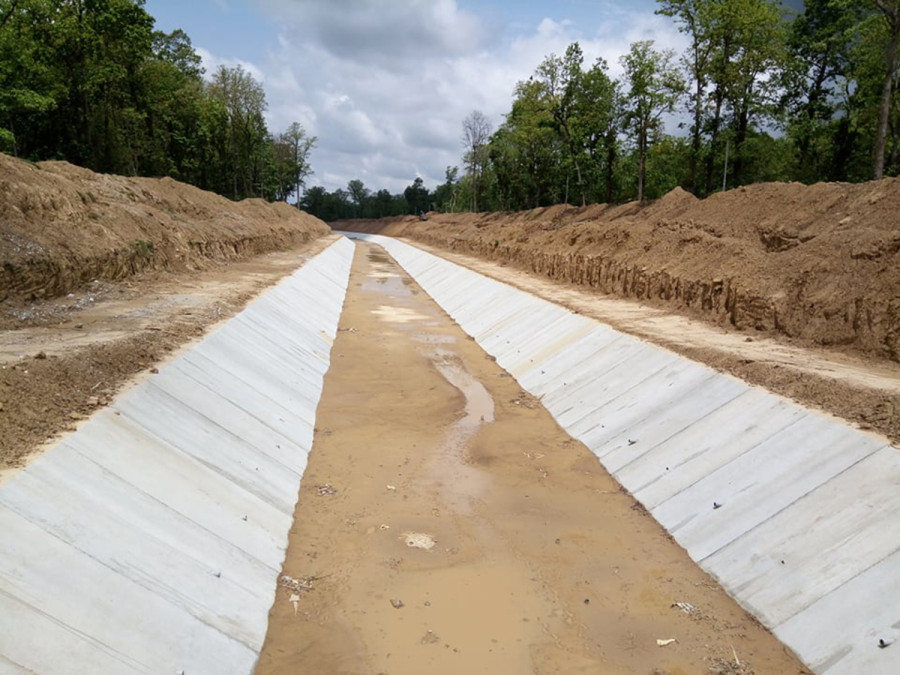Lumbini Province
Irrigation project faces quandary in Kailali as arable land shrinks
Since federalism came in place, the local unit has placed a lot of emphasis on building concrete settlements, and little on keeping arable land intact—changing the face of Tikapur.
Ganesh Chaudhary
The eight bigha land that Laxmi Chaudhary’s great grandfather owned at Bangaun, in Tikapur Municipality, is divided among his seven progenies. What was once a vast arable land producing yield to last his family for over a year is now ready to be sold in parcels to construct houses, said Chaudhary.
And it’s not just Chaudhary who is looking to turn his fields into concrete spaces. “Many others are selling their land too, for construction, because the market is close by and the price is good,” Chaudhary said.
In just a span of two years, Chaudhary says the number of houses in his neighbourhood has risen from 30 to 70.
These changes have rendered an irrigation project, the Rani Jamara Kulariya Irrigation Project, futile. In early 2018, the project’s second phase of construction started, expecting to water 14,300 hectares of fields upon completion. But, a year later, much of that arable land has been turned into settlement areas, and nobody now knows whether the project will now actually benefit local farmers.
“Since the project hasn’t updated its survey, we can’t exactly say how much of the land the project will irrigate,” said Lalbeer Chaudhary, chief of the Rani Jamara Kulariya Irrigation Project Consumers’ Committee. “But it’s certain that much of the arable land is either being turned into settlements or are in the process.”
Min Bahadur Shahi, a lecturer of Sociology at Tikapur Multiple Campus, said that the arable land is being converted into concrete because of a lack of land utilisation policy. “We’ve heard the policy is being formulated in Kathmandu, but we don’t know when it will take shape and when it will come here,” he said. “We hope the policy will also include provisions to save arable land. Neither the local unit nor the project or consumers’ committees are concerned to preserve arable land here.”
With federalism in place, a majority of local units have focussed on increasing motorable roads—often at the cost of landslide- and erosion-risk. “In Kailali, the focus is seemingly in constructing more concrete structures at the cost of arable lands,” Shahi added.
Moreover, officials say the arable lands are being increasingly cultivated with Lyptus trees. “The lyptus trees harm the crops, so even as the irrigation plan is afoot, it wouldn’t be all that beneficial,” said Damodar Khadka, deputy chair of the consumers’ committee. Khadka estimates about 50 bigha area of the project would benefit if it is covered with Lyptus trees. Upon its conception, the project is expected to benefit about 6,000 hectares of arable land.




 18.12°C Kathmandu
18.12°C Kathmandu.jpg)












